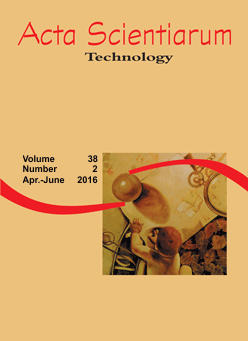<b>Dispersion of pollutants in watercourses intercepted by highway BR-050, in the Triângulo Mineiro region, Minas Gerais, Brazil
DOI:
https://doi.org/10.4025/actascitechnol.v38i2.27742Palavras-chave:
Bom Jardim Stream, Jordão river, saline tracer, fluorescent tracer, longitudinal dispersion coefficientResumo
Models based on the diffusive-advective equations are valuable tools for forecasting of contamination levels downstream from spill points. These models require field parameters for validation. The longitudinal dispersion coefficient EL, which translates the transport potential of dilute pollutant is amongst the most important parameters. Based on field techniques using saline and fluorescent tracers, this study determined the EL in three streams intercepted by highway BR-050, all located in the Paranaíba River Basin. The discrepancy ratios (Rd) of some experimental methods and equations reported in the literature were analyzed and compared with the standard routing procedure. Comparing the results of the Moment (statistical), the Chatwin, the peak concentration and the crown concentration methods, the lowest discrepancy ratios were obtained for the latter two methods. Ribeiro, Silva, Soares, and Guedes (2010) also showed that the peak concentration and the crown concentration methods produce the lowest discrepancy ratios. The analysis of contamination scenarios clearly illustrates the direct relationship between pollutant transport capacity and water discharges in natural watercourses.
Â
Downloads
Downloads
Publicado
Como Citar
Edição
Seção
Licença
DECLARAÇíO DE ORIGINALIDADE E DIREITOS AUTORAIS
Declaro que o presente artigo é original, não tendo sido submetido í publicação em qualquer outro periódico nacional ou internacional, quer seja em parte ou em sua totalidade.
Os direitos autorais pertencem exclusivamente aos autores. Os direitos de licenciamento utilizados pelo periódico é a licença Creative Commons Attribution 4.0 (CC BY 4.0): são permitidos o compartilhamento (cópia e distribuição do material em qualqer meio ou formato) e adaptação (remix, transformação e criação de material a partir do conteúdo assim licenciado para quaisquer fins, inclusive comerciais.
Recomenda-se a leitura desse link para maiores informações sobre o tema: fornecimento de créditos e referências de forma correta, entre outros detalhes cruciais para uso adequado do material licenciado.















